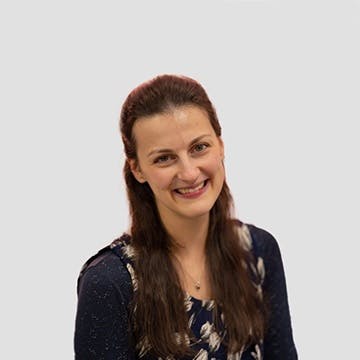Iron-rich foods to add to your diet



Iron is a mineral your red blood cells need to transport oxygen around your body. Without enough iron, you might develop iron deficiency anaemia, which can cause tiredness, heart palpitations, and shortness of breath. Eating enough iron-rich foods can help you maintain healthy levels.
Why you need iron
Your body uses iron to make haemoglobin, a protein in red blood cells that carries oxygen from your lungs to your cells. When iron levels drop, your body can't produce enough healthy red blood cells, leading to iron deficiency anaemia.
Who needs more iron-rich foods?
Women of reproductive age have higher iron needs than men due to menstrual losses. People who donate blood often and those with gastrointestinal disorders can also have higher needs.
Vegetarians and vegans also need to pay attention to their iron intake. Plant foods contain non-heme iron, which the body absorbs less of than animal-based heme iron.
Daily iron requirements
The amount of iron you need per day varies by age, sex, and life stage.
- Pre-menopausal females: 14.8 milligrams (mg)
- Post-menopausal females: 8.7mg
- Adolescent males: 11.3mg
- Adult males: 8.7mg
Top 8 iron-rich foods
1. Beans and lentils
These affordable pantry staples provide protein and fibre in addition to iron. Half a cup of tinned beans provides 4mg of iron, while the same amount of lentils provides 3mg.
2. Red meat
Red meat, like beef, is a good source of iron when eaten as part of a healthy diet. One 3-ounce serving (roughly the size of a deck of cards) contains 2.5mg of iron.
Because animal products contain heme iron, the iron in beef mince or steak is more easily absorbed and used by your body than the equivalent amount in beans.
3. Dark green vegetables
Dark green leafy vegetables like spinach and kale are rich in micronutrients in addition to iron. Half a cup of cooked spinach contains 3mg.
However, iron contains oxalic acid, a compound that binds to iron and makes it difficult for your body to absorb. Boiling it can reduce the oxalic acid content, making the iron more bioavailable.
4. Eggs
Eggs are a source of iron, with one egg containing about 1mg. They also contain protein, vitamin D, vitamin B12, and folate.
5. Potatoes
This one may surprise you - but yes, potatoes are actually a good way to meet your daily needs, with one medium potato (with the skin) containing about 2mg of iron. They also contain vitamin C, which aids the absorption of iron in your body.
6. Iron-fortified cereals
Lots of breakfast cereals are fortified with micronutrients, such as iron. Eating them is an easy way to add iron to your diet, especially if you're plant-based.
The amount of iron varies from cereal to cereal, with some options containing up to 18mg per serving.
7. Honourable mentions
Some of the foods highest in iron probably aren't on your weekly grocery list. However, it's worth knowing what your options are, especially if you're someone who has higher iron needs due to pregnancy or heavy menstrual periods.
High-iron foods include:
- Oysters: 3 ounces contain 8mg
- Beef liver: 3 ounces contain 5mg
- Mussels: 3 ounces contain 5.7mg
How to improve iron absorption
The iron in plant-based foods is harder for your body to absorb. However, some simple strategies can help:
- Pair iron-rich foods with vitamin C: Eating citrus fruits, peppers, tomatoes, or strawberries alongside iron-rich meals can boost absorption.
- Avoid tea and coffee around mealtimes: Wait at least an hour before or after eating iron-rich foods to ensure you're absorbing the iron.
- Consider timing with dairy: Calcium from dairy products can interfere with iron absorption. If you're concerned about your iron levels, you might want to have dairy-rich meals at different times from iron-rich ones.
If you're struggling with low energy or suspect iron deficiency, testing your ferritin levels can help you understand your iron status and track whether dietary changes are working.
The takeaway
You can get iron from a range of foods, including plant and animal sources. Pairing plant-based iron sources with vitamin C and avoiding tea around mealtimes represents practical optimisation, not perfectionism.
- British Dietetic Association. (n.d.). Iron. https://www.bda.uk.com/resource/iron-rich-foods-iron-deficiency.html
- Dietary Guidelines for Americans. (n.d.). Food sources of iron. https://www.dietaryguidelines.gov/resources/2020-2025-dietary-guidelines-online-materials/food-sources-select-nutrients/food-sources-iron
- National Institutes of Health. (2023). Iron: Fact sheet for consumers. https://ods.od.nih.gov/factsheets/Iron-Consumer/
- National Institutes of Health. (2025). Iron: Fact sheet for health professionals. https://ods.od.nih.gov/factsheets/Iron-HealthProfessional/
- NHS. (2020). Iron. https://www.nhs.uk/conditions/vitamins-and-minerals/iron/
- Piskin, E. et al. (2022). Iron Absorption: Factors, Limitations, and Improvement Methods. https://pubs.acs.org/doi/10.1021/acsomega.2c01833